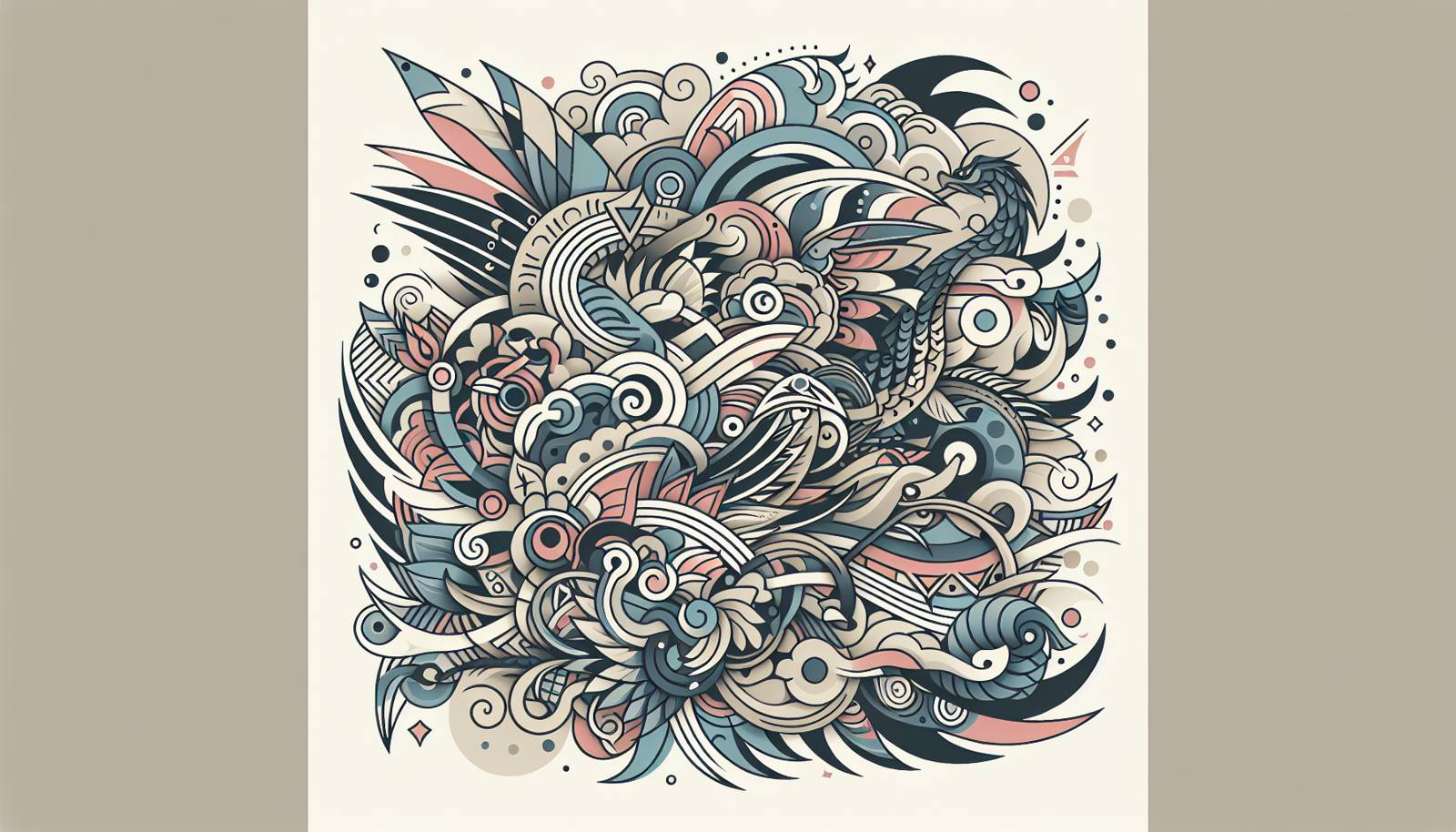
FAQ About The Role of Tattoos in Modern Subculture Identity

What role do tattoos play in modern subcultures?
Tattoos play a significant role as a form of self-expression and identity within modern subcultures. They often symbolize an individual's affiliation with a particular group, their beliefs, values, and personal history. Many subcultures use tattoos to assert individuality and uniqueness, yet also to showcase a sense of belonging and commitment to the community. For example, tattoos can signal membership in the punk, goth, or biker subcultures, each with its own distinct style and symbolism.

How did tattoos become associated with subculture identities?
The association between tattoos and subculture identities developed over several decades, particularly in the latter half of the 20th century. This connection grew as subcultures like bikers, punks, and goths used tattoos to rebel against mainstream norms and express alternative lifestyles. Tattoos became a visual language that conveyed group affiliation, resistance, and personal narratives, thus corroborating one's identity within a specific subculture.

Why are tattoos an important form of self-expression in subcultures?
Tattoos are an important form of self-expression in subcultures because they provide a permanent and visually impactful way to display personal and cultural beliefs. They offer individuals the opportunity to visually articulate stories, experiences, and identities that are crucial to their existence and to the subculture they belong to. This form of self-expression is crucial for subcultures that often emphasize individuality and non-conformity.

Which subcultures are most known for their use of tattoos?
Several subcultures are particularly known for their use of tattoos, including the punk, goth, biker, and prison subcultures. Punk and goths often use tattoos to complement their distinctive aesthetic, while bikers might use them to signify loyalty to a motorcycle club. Prison culture tattoos often carry complex meanings related to personal and group identity, including hierarchies and codes within the prison system.

Can tattoos influence group dynamics within a subculture?
Yes, tattoos can significantly influence group dynamics within a subculture. They can serve as a unifying symbol that strengthens group identity and solidarity. Tattoos may act as markers of status or achievement within the group, and can also play a role in social inclusion or exclusion. For instance, having a particular tattoo could grant someone higher status or acceptance within a subculture.

Are there cultural differences in tattoo meanings within subcultures?
Yes, there are considerable cultural differences in tattoo meanings within subcultures. Tattoos can signify different things based on cultural contexts, historical backgrounds, and local traditions. For example, while certain symbols might be interpreted positively in one culture, they can carry negative connotations in another. Moreover, each subculture may adapt common tattoo elements to convey specific meanings unique to their group experiences and ideologies.

How has media influenced the perception of tattoos in subcultures?
Media has played a substantial role in shaping and sometimes distorting the perception of tattoos in subcultures. Through films, music, and television, tattoos are often portrayed as symbols of rebellion, criminality, or edginess, depending on the narrative. This portrayal can enhance specific subculture identities but might also lead to stereotypes or misconceptions about tattooed individuals. Additionally, social media has amplified the visibility and diversity of tattoo art, contributing to broader acceptance and understanding.

What are some misconceptions about tattoos within subcultures?
Common misconceptions include the idea that tattoos within subcultures are merely aesthetic without meaningful significance, or that they solely represent rebellion or criminality. In reality, tattoos often hold personal and cultural importance, reflecting deep-seated values and histories. Another misconception is that all members of a subculture possess tattoos, which is not necessarily true, as individual participation varies.

How do subcultures view tattoo removal?
Views on tattoo removal vary widely across subcultures. In some, tattoos are seen as permanent records of one's identity and past experiences, making removal a sensitive topic. However, if the tattoo no longer represents the individual's identity or if it interferes with personal growth, removal might be accepted or even supported. The decision often reflects nuanced personal and cultural interpretations within the subculture.

Can tattoo styles differ significantly between subcultures?
Yes, tattoo styles can differ significantly between subcultures, reflecting unique aesthetic preferences and symbolic meanings. For example, punk tattoos might favor bold, minimalist designs with anarchic symbols, while goth tattoos often incorporate dark, intricate, and romantic imagery. Biker tattoos might include club insignias or emblems significant to the lifestyle. These diverse styles demonstrate the rich tapestry of each subculture’s values and expression.

What is the historical significance of tattoos in subcultures?
The historical significance of tattoos in subcultures lies in their enduring role as symbols of identity, expression, and resistance. Historically, tattoos were used to mark outlaws, prisoners, or other societal outsiders, which some subcultures embraced as a mark of defiance against mainstream norms. They serve as a historical narrative tool, recording individual and collective histories, struggles, and achievements.

Do tattoos affect how individuals are perceived within their subculture?
Tattoos can certainly affect how individuals are perceived within their subculture. They may enhance the perception of authenticity and dedication to the subculture's values, potentially increasing the individual's status or recognition within the group. Conversely, tattoos that are deemed inauthentic or inappropriate by subcultural standards might elicit criticism or exclusion.

How do tattoo artists contribute to subculture identity?
Tattoo artists play a crucial role in subculture identity by creating artworks that embody the values, symbols, and aesthetics of the subculture. They often serve as cultural mediators, translating complex ideas into visual art that resonates with the subculture’s identity. Their skill and creativity help individuals express their personal stories while aligning with the subculture's overarching themes and motifs.

What psychological factors influence the decision to get a tattoo in subcultures?
Psychological factors influencing the decision to get a tattoo in subcultures include the desire for self-expression, the need to belong, and the wish to signify personal milestones or changes. Individuals may also seek to reinforce personal or group identities, challenge societal norms, or manifest resilience and empowerment through their tattoos. Emotions like pride, rebellion, or solidarity often underpin these decisions.

Are tattoos more accepted in certain subcultures compared to others?
Tattoos are indeed more accepted in certain subcultures compared to others, largely depending on the cultural and historical context of the subculture. For example, punk and biker subcultures typically embrace tattoos as an integral part of their identity. Conversely, some subcultures may have more ambivalence or stricter norms concerning tattoos, balancing between personal expression and cultural traditions.

How do tattoos serve as a cultural bridge between different subcultures?
Tattoos can serve as a cultural bridge between different subcultures by sharing common symbols, themes, or aesthetics that resonate across groups. These shared elements can foster mutual recognition and respect, providing a visual language and medium through which subcultures can find common ground. In some cases, collaborative tattoos can symbolize alliances or shared values between distinct subcultural entities.

Is there a difference in tattoo trends between subcultures?
There is a notable difference in tattoo trends between subcultures, as each tends to develop unique styles, themes, and motifs that reflect their identity and values. These trends evolve with cultural shifts, influential figures, and aesthetic innovation within the subculture. For example, this could manifest as particular iconography, color schemes, or tattoo placement preferences that are distinctive to each group.

How are tattoos used to signal personal narratives within subcultures?
Tattoos are used to signal personal narratives within subcultures by visually portraying important life events, beliefs, and affiliations. They can embody formative experiences, express ideological commitments, or commemorate significant relationships. This storytelling aspect allows individuals to share personal journeys and maintain historical continuity within their subculture.

What role do tattoos play in rites of passage within subcultures?
In many subcultures, tattoos play a vital role in rites of passage, symbolizing transitions, achievements, or the attainment of certain statuses. These rituals could include reaching a particular age, initiation into a group, or commemorating a personal victory. Tattoos thus serve as visual markers of personal growth and milestones within the subcultural context.

How do tattoos contribute to the visual identity of a subculture?
Tattoos contribute significantly to the visual identity of a subculture by enhancing its distinct aesthetic and reinforcing its cultural symbols. They offer a tangible means for individuals to embody and project the subculture's values and traditions. This visual identity, marked by tattoos, helps define the subculture's boundaries and foster group cohesion amongst its members.
